Introduction –
Over the years, I’ve never entirely managed a trip to Hamburg; if it wasn’t for the weather, it was COVID, the trip just never happened. I looked at the feasibility of a trip in November of 2022, but postponed it to March 2023, but this fell through. So the search for a trip to Hamburg continued, especially keen to visit Miniatur Wunderland, which, according to Guinness World Records, is the largest model railway system in the world.
I joined PPL/IR Europe in October 2022, which is open to any GA pilot interested in operating light aircraft under Instrument Flight Rules (IFR) in Europe, making PPL/IR Europe the home of GA IFR pilots in Europe. PPL/IR Europe was set up originally by a group of friends who had obtained their instrument qualifications and used them to travel around Europe.
In early 2024, the event PPL/IR Europe Annual Conference was advertised and scheduled to take place in June of that year, coincidentally in Hamburg.
The Plan –
The plan was to fly to Hamburg on Friday morning and return Sunday afternoon after the conference on Saturday. We would arrive to join the pre-evening dinner and drinks. Due to the weather seminar not being covered by any volunteers, I quickly suggested to the PPL/IR Europe leadership that I would kindly present for them. However, my knowledge and use of Skew-Ts were limited. I would be assisted by my partner Vanessa, who helped me build the presentation and get it to the right standard.
We would have various meetings leading up to the day with events, making sure we had everything in place for what would very quickly become one of the most popular breakout sessions of the conference. It was fully subscribed for both sessions that were scheduled that day. The weather had plagued a fair few of my flights in recent memory, so I had a lot of knowledge to share and some tools that I use.
I would fly outbound on Friday, and the instructor/owner of G-ZANY would fly the return on Sunday.
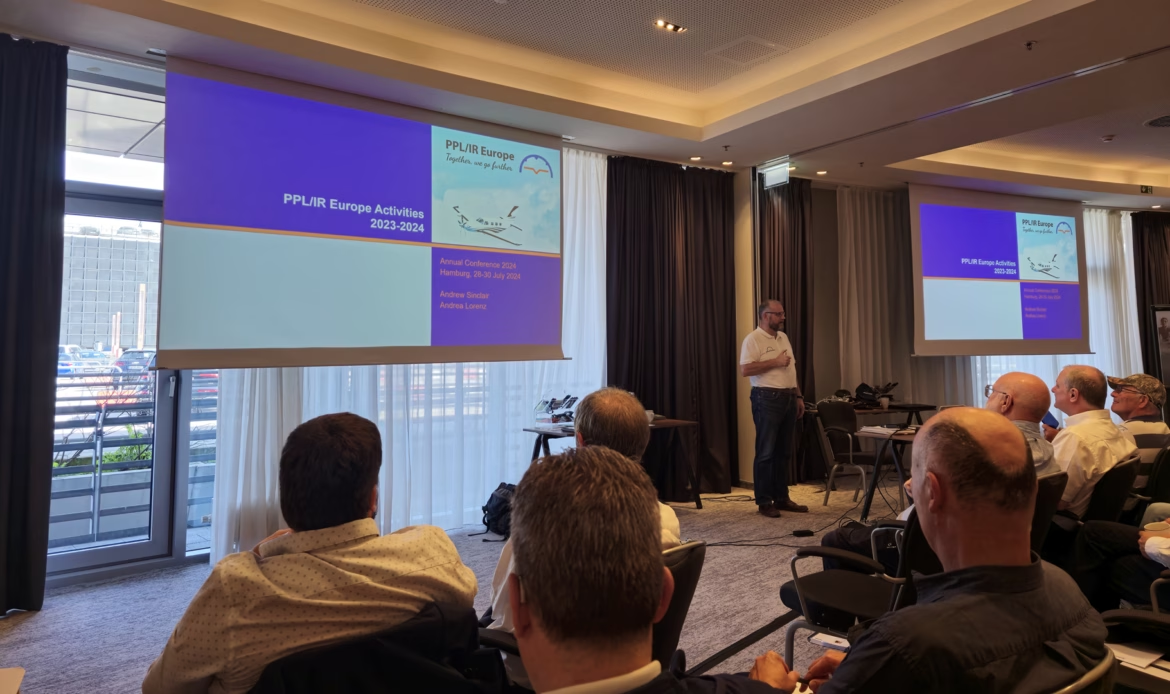
Airport Choices –
The choice of airport for IFR flights is determined by several criteria, such as reasonable handling fees, accessibility (both customs and police), and a recently implemented restriction: The airport does not allow aircraft categorised as Category A. Airports like Barcelona El Prat prohibit this, and in some cases, even though they are not allowed to, they do so informally and charge you outrageous costs. For the kind of aircraft we operate, Jet A1 availability is not a problem at the majority of significant international airports.
Hamburg EDDH
Hamburg is the second largest city in Germany; its airport, EDDH, is the fifth busiest in Germany. As this was a fly-in organised by PPL/IR Europe, the airport choice was relatively easy, but one of the friendliest GA airfields in Germany. Hamburg is so large that it can easily accommodate 40+ aircraft flying in and out – any contact with the airport was just to arrange payment of landing fees and refuelling.
The airport has some capacity restrictions due to the main runways crossing each other, however, the airport has a large dedicated General Aviation Ramp to the south-east of the airfield. The GAT is published a short transit away from the main parking area.
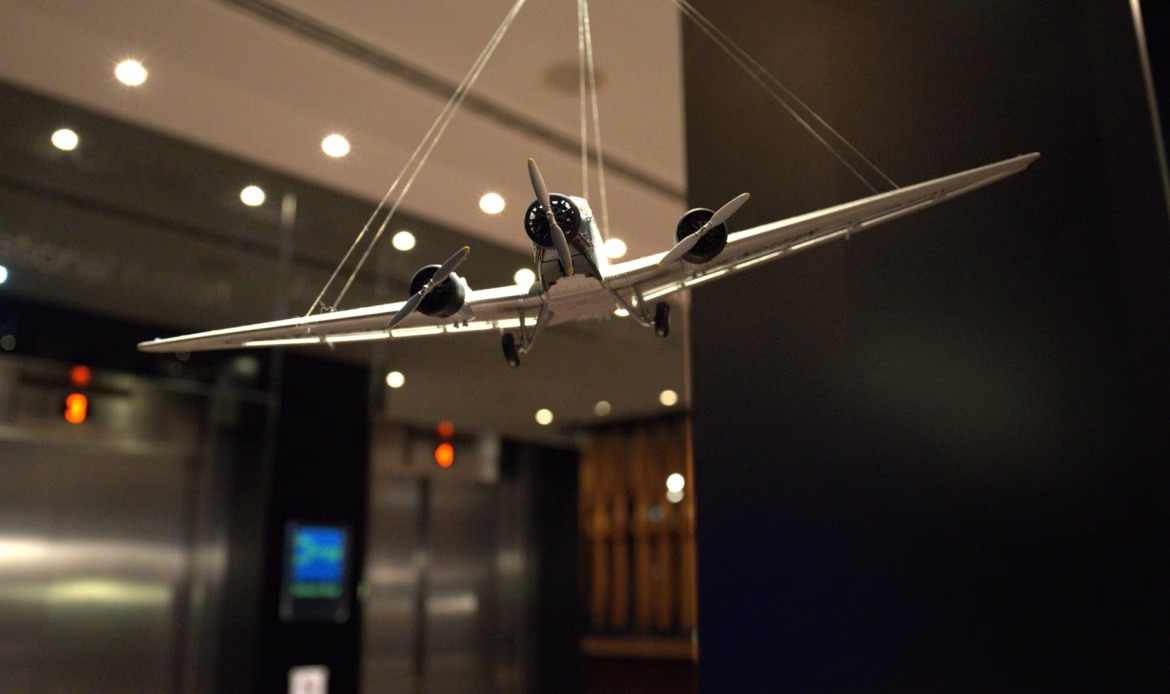
Handling/Airport Quotations –
No handling was required at Hamburg, but the PPL/IR Europe management had pre-notified the GAT of our impending arrivals, and I only sent a courtesy email of our registration and aircraft type. Payment of any fees was the individual pilot’s responsibility, and AerOps would be used.
You can check the costs of landing at EDDH here: https://gat.aerops.com/prices/calculator/EDDH
For IFR, a slot is required via the SLOT system with [email protected] or +49 69 257 585 120.
Despite some confusion from the GAT about light GA needing slots, having emailed the team at FLUKO and the information available online, Hamburg (HAM/EDDH) is a Level 3 Airport. Coordinated Airports: The airports Berlin, Bremen, Dresden, Düsseldorf, Erfurt, Frankfurt/Main, Hamburg, Hannover, Cologne/Bonn, Leipzig/Halle, Munich, Münster/Osnabrück, Nuremberg, Saarbrücken, and Stuttgart are coordinated airports.
Accommodation –
Pre-arranged via PPL/IR Europe, we stayed at the Motel One Hotel: Hamburg Airport. This was a very good hotel within walking distance from the airport, yet quiet and convenient. This hotel comes with a stunning bar for those post-flight drinks or post-dinner drinks with free wifi throughout for any pre-flight planning, and is in a great location with a short walk from the GAT and the Main Terminal for transportation into Hamburg City Centre.
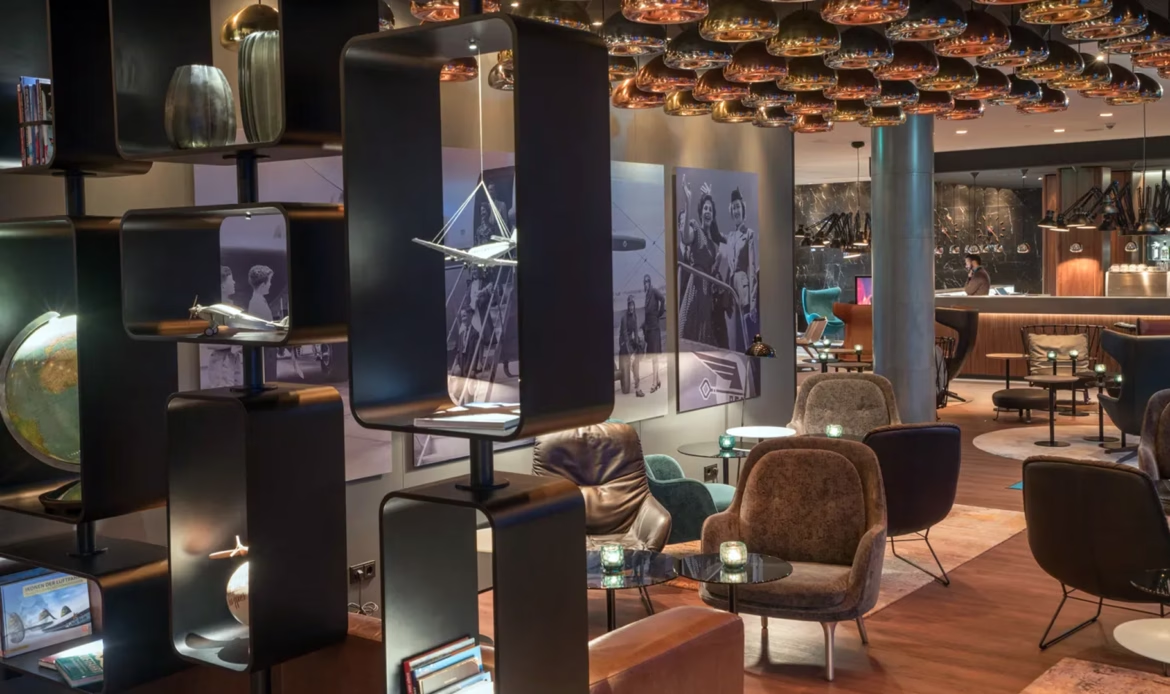
The design of the hotel at Hamburg Airport is inspired by humanity’s dream of flying, using propeller-shaped partition walls made from solid walnut and themed metal prints recounting the history of air travel. Lamps illuminating the sky above the bar, reminiscent of aircraft from the pioneering age of aviation. A natural stone wall covered in clocks tells you the time in Sydney, London and New York and emphasises the role of Hamburg as a significant commercial metropolis.
Model aeroplanes, books on the history of air travel, and globes will tickle your travel bug. This hotel has it all.

Weather Forecast –
Europe’s unstable weather continued, characterised by sea-level pressure exceptionally far below average in the region between Iceland and Scandinavia, a vast swathe of the continent experienced excessive rainfall, and an area of Thunderstorms moved through Germany in the form of a cold front the night before the flight to Hamburg.
Flying conditions were forecast to be relatively smooth to Hamburg with the chance of some gusts due to tighter isobars. Still, any convection was likely to be benign from surface heating.
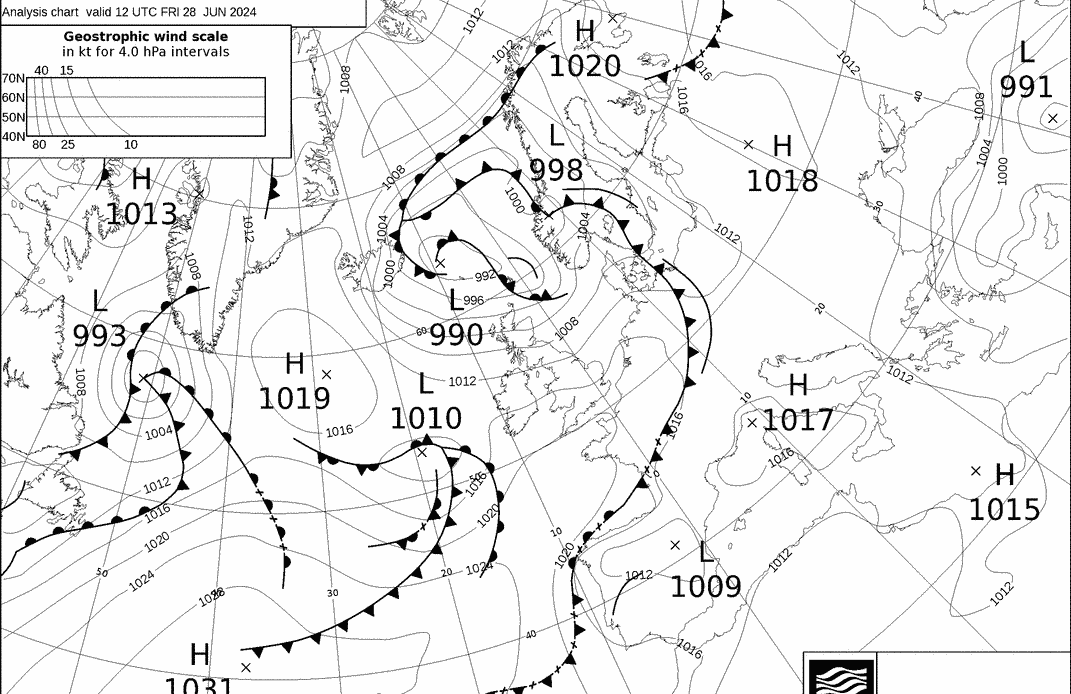
TAF EGSS 280457Z 2806/2912 25010KT 9999 FEW030 BECMG 2903/2906 VRB03KT=
TAF for London Stansted, Southend & Hamburg on 28th of June 2024
TAF EGMC 280555Z 2806/2815 24010KT 9999 SCT020=
TAF COR EDDH 280559Z 2806/2912 24007KT 9999 SCT040 BECMG 2806/2809 28014KT TEMPO 2806/2808 BKN012 TEMPO 2809/2817 27015G25KT BECMG 2817/2819 29009KT BECMG 2819/2821 VRB03KT BECMG 2906/2908 16005KT=
Flight to Hamburg –
It makes a change not to have to get up super early before a flight, I’ve done far too many of them, but today was a reasonably early morning—a 7 am alarm to get ready and go to Stapleford. With the bags packed the night before, and the only thing required was to check the flight plan for any slots and last-minute weather changes, we set off on foot to the nearest Pret.
The downside of all this equipment, that I must find a new way of carrying it on public transport is that it takes some time to travel with – but due to the fact we had limited time to travel and wanted brunch we got the bus to the nearest tube station with our coffee’s and then the usual tube to Theydon Bois before a taxi to Stapleford. I do have access to a car, but it’s not mine, so for day trips away it would probably be fine, but for a weekend away it wouldn’t be likely I could utilise it.
Before a flight, I tend not to have anything greasy because some places don’t change the oil, and one could get an upset stomach from the poor quality, so a light breakfast before our flight to Hamburg. As I was having a flight with someone with far more experience and knowledge, it was clear to have a discussion about tasks and roles during this flight, a helping hand, so to speak, but for the outbound sector, it would be me as Captain (PIC) flying and doing the radio.
We would prepare the aircraft and carefully calculate the required fuel based on the 3 of us, our baggage and the flight time, and it was possible to make a direct flight with sufficient IFR reserves. The flight to Hamburg was forecast to be roughly just under 3 hours, so this was a good flight to stretch the aircraft’s legs, and because I had flown so much recently, I was fully versed in IFR handling with severe weather that the flying calendar had been throwing at me this year.
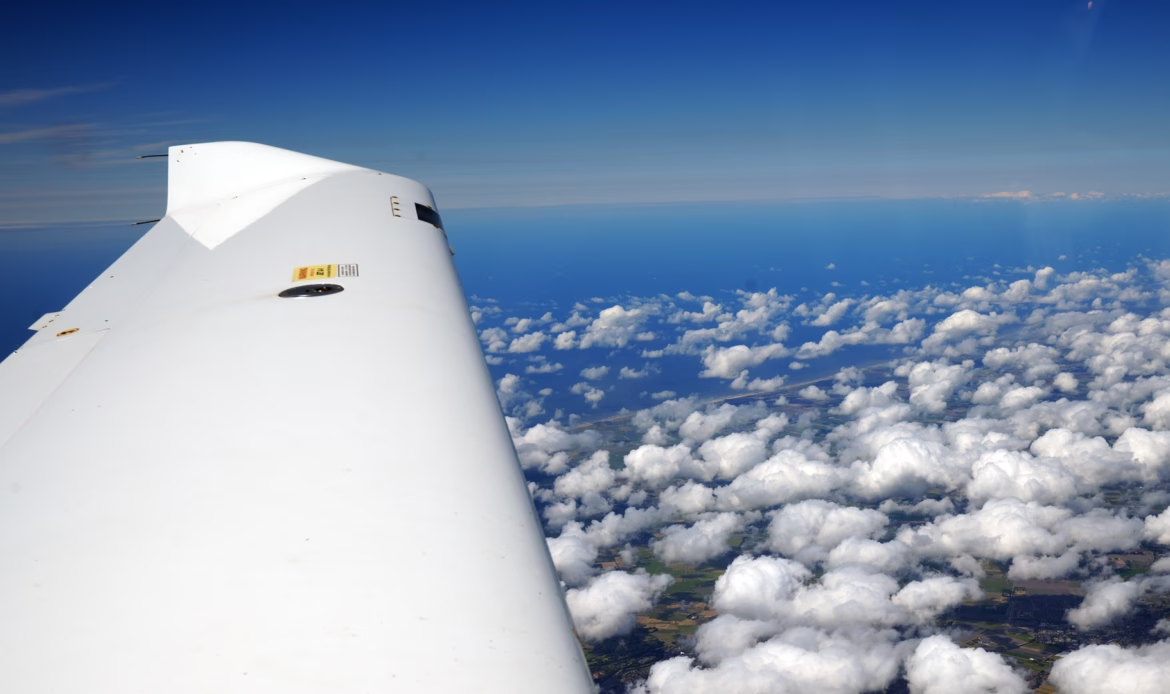
After refuelling, preparing the aircraft and getting comfortable, we loaded up the FMS navigators and loaded our flight plan to Hamburg, receiving our IFR release details and loading this information into the GTN 650XI’s. After all our checks, we lined up Runway 21L and completed a rolling departure due to traffic on final approach. It’s been ages since I had flown a rolling take-off out of Stapleford, and what a thrill it can be sometimes.
We finally got airborne on this mid-summer afternoon, the sun just barely making it through the thin layer of Stratocumulus. It was warm, so a tad bumpy, but not overly turbulent due to thermals. We were struggling to climb due to the light and variable wind conditions, but eventually got some performance and quickly changed over to a very busy London TMA.
The radio for this sector was non-stop busy, with traffic coming into the Lambourne VOR, traffic departing London City, London Heathrow and London Stansted heading for either Clactor VOR or Detling VOR for its airways towards Europe and further afield. It was notably a lot busier than I’ve ever witnessed before as an Instrument Rated Pilot.
As a matter of fact, after the event, NATS released a press statement to state they’ve had their busiest year to date since the COVID pandemic, handling almost 8,500 flights a day. So it was of interest that flights in a GA aircraft would be subject to some regulation now, and potentially on slot-regulated days or due to multiple weather avoidance leading to reduced capacity, which means that it would possibly be harder to fly IFR in the London TMA, but let’s see.
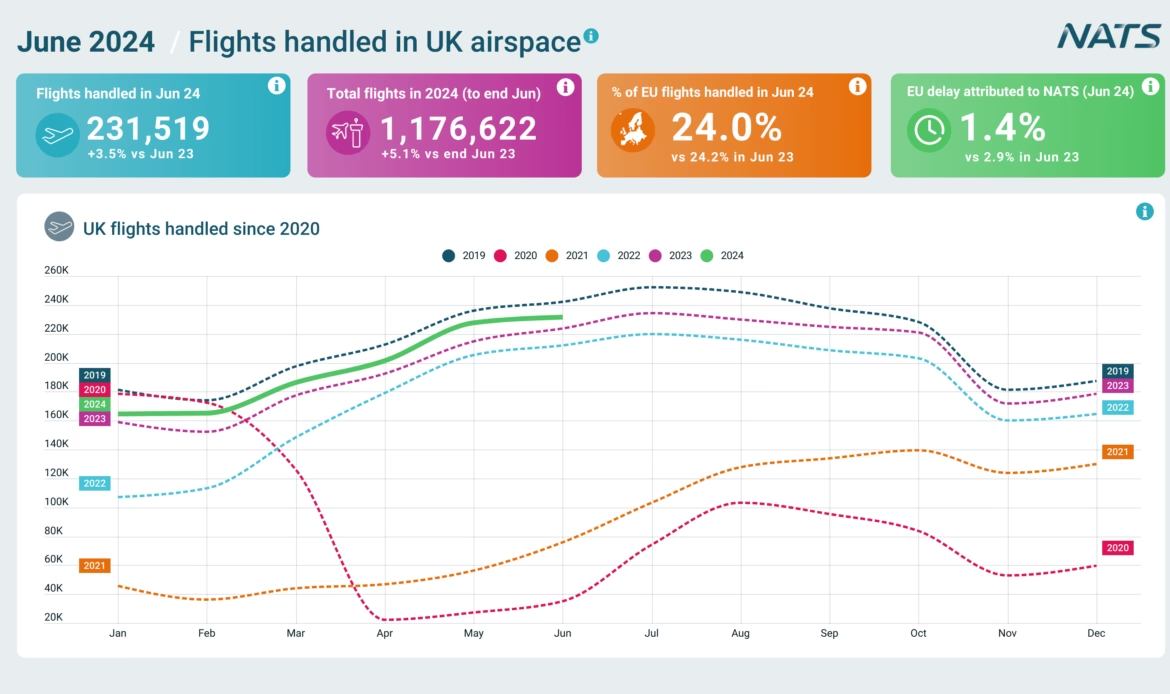
London quickly cleared us into controlled airspace, to my surprise and a continuous climb to FL150, but first we had to climb through a somewhat overcast layer of stratocumulus which was fairly bumpy at the base and through towards the tops and because of our weight, the DA40 reacted in it’s usual way of not wanting to climb, but eventually managed to struggle our way through with various lumps inside the cloud setting the stall warner off.
Whilst initially we got a stop climb at FL110 due to passing traffic ahead, we quickly recleared to FL150 and with a brilliant tailwind reached our cruise within 35 minutes, the usual time it takes to get to this flight level at maximum weight. At one point, we hit 188 knots ground speed, and within 45 minutes, we were transferred to Dutch ATC in the form of Amsterdam Radar with a shortcut direct to waypoint REDFA. I’d been through this airspace twice recently, in January to Amsterdam and last month to Rotterdam on our way to Germany. Flying FL150 across the North Sea to Europe is a dream; it’s a fairly decent run with plenty of airspace to manoeuvre.
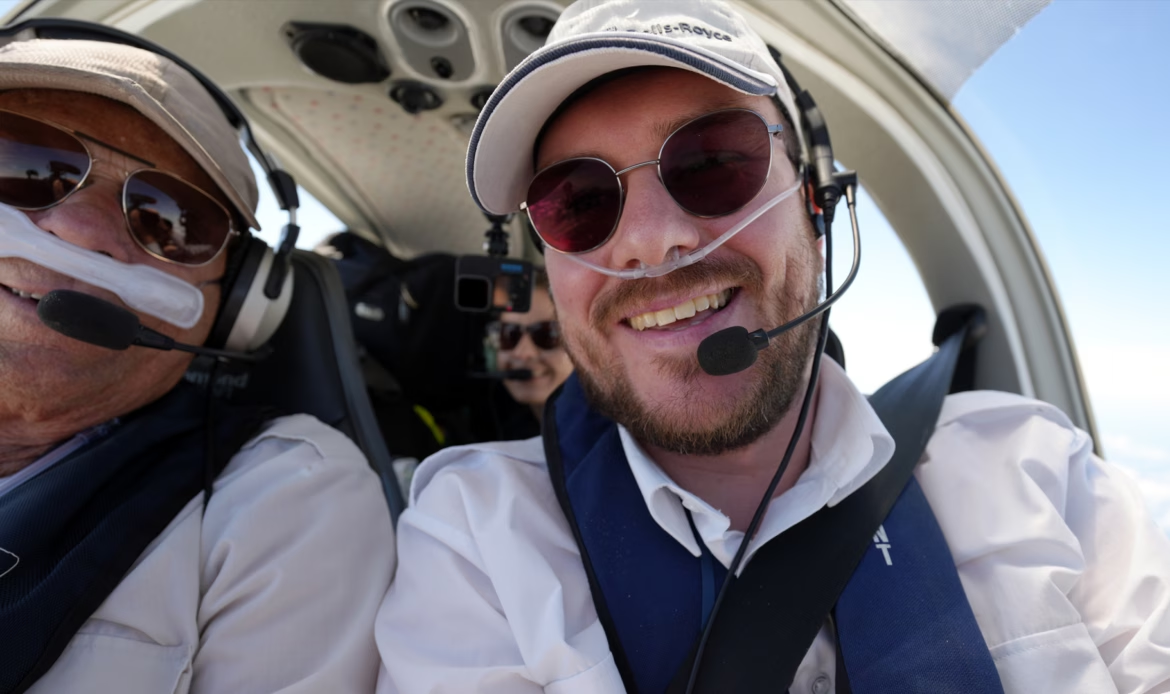
The weather cleared a bit to fair weather cumulus, and that was the general forecast for the rest of the flight. The only significant weather on the chart was moderate turbulence at FL160 just before our arrival into Hamburg, associated with a strong jet stream. This isn’t the first time I’ve noticed the jetstream propagating downward, but it does happen, and we would see close to the time if this were to have an impact on our ride.
After flying to the north of Amsterdam Schiphol, we were given a shortcut to waypoint RIBSO, which was to the northwest of Hamburg on our arrival.
Most flights are fairly simple and there’s plenty of time in the cruise to have a bite to eat, or read the manual, or if you want a book or newspaper – in this instance I chose to eat a fine homemade lunch made by my partner Vanessa, and what a lovely sandwich it was. A packet of crips that popped at FL100 and we were on our way to a lovely evening in Hamburg.
The thing with these flights, you have time to enjoy the view because you know that the weather isn’t significant enough that you have to continuously monitor the conditions in case of a failure or a medical emergency, where you have to divert and would want the weather at hand.
We were approaching that area of turbulence, and started to be rocked about; I did discuss with Rob that we might have to descend if it got too uncomfortable, but we elected to stay where we were, and that would also build some confidence – something I lost on one too many severe turbulence episodes whilst airline flying as cabin crew.
We set up our arrival, the full RNAV transition for the RNP approach onto Runway 23 at Hamburg. We briefed our arrival and set up the navigators with all the frequencies required and the minima for arrival. Expecting to be cleared FL110 by RIBSO, a short while after our brief, we were descended and handed off to the next sector.
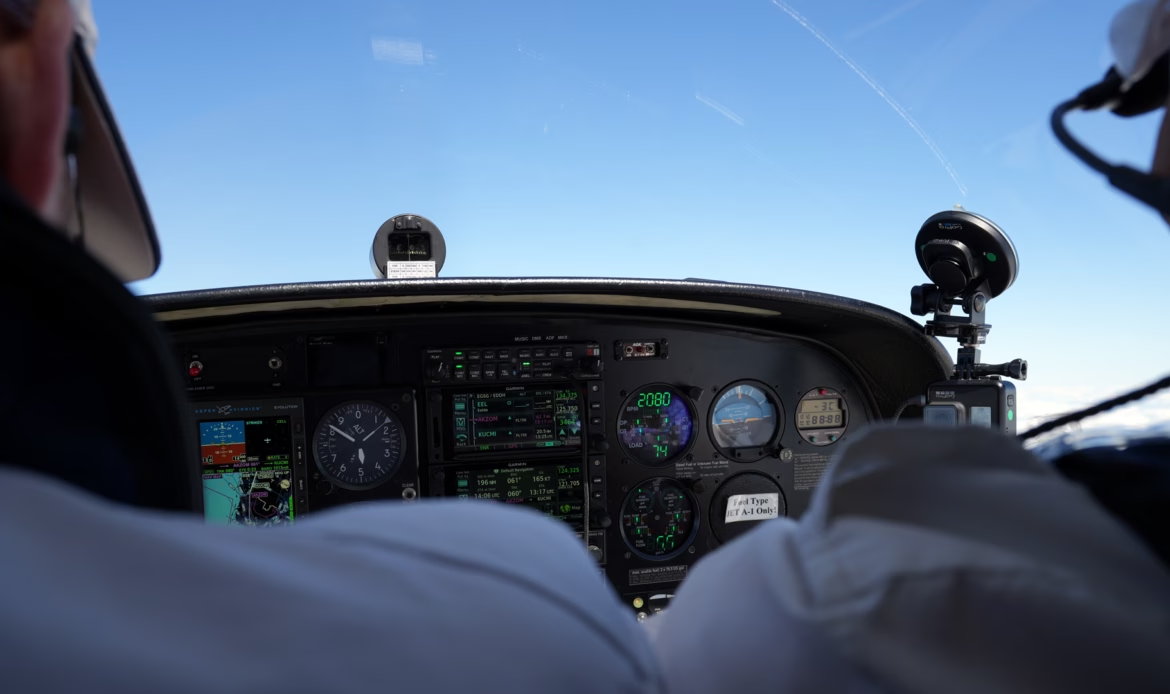
At this point, we noticed all the TCu starting to build and bubble up below us, so we would have to make sure our belts were strapped tighter and avoid any unforgiving-looking weather that would be pretty uncomfortable on a late-summer afternoon. Strangely, there was nothing in the forecast that would shout convection, but this was Summer, and heat-based convection would get going around about this time.
The frequency sounded busy with lots of private registered aircraft, presumably for the PPL/IR Europe annual conference that was about to start in a few hours with the pre-evening meal and drinks. It wasn’t just us, but a few airliners all inbound at the same time, and every vector heading to the left, I realised this would be a fair lengthy approach into Hamburg.
With one aircraft kicking off about weather, probably forcing a shortcut, we then had to be vectored to the left as he was then given priority ahead of us, but a quick 200-degree turn and cleared to a waypoint on the transition. There was no weather on the radar that we could see, so he was looking for a shortcut.
This approach, though, was fairly bumpy, and once we went below 4000ft, the usual suspect altitude, we were thrown all over the place on this mid-summer’s day into Hamburg. We were flying pretty fast, to fit in with airliner traffic, 140 knots till 4DME – slowing back to 90 knots, the turbulence didn’t give in, it was rough and with full flaps it didn’t improve – it was a challenging approach and even without all of that fun, it was gusting to 25 knots and sadly my landing wasn’t any better with windshear right at the last moment.
In hindsight, I probably could have added more power as there were miles of runway ahead, but these are things for the future to bear in mind and not every landing is a good one, so long as you can walk away from it, it’s not the end of the world. We vacated the runway and taxied back, with the vaguest instructions ever – follow the truck.
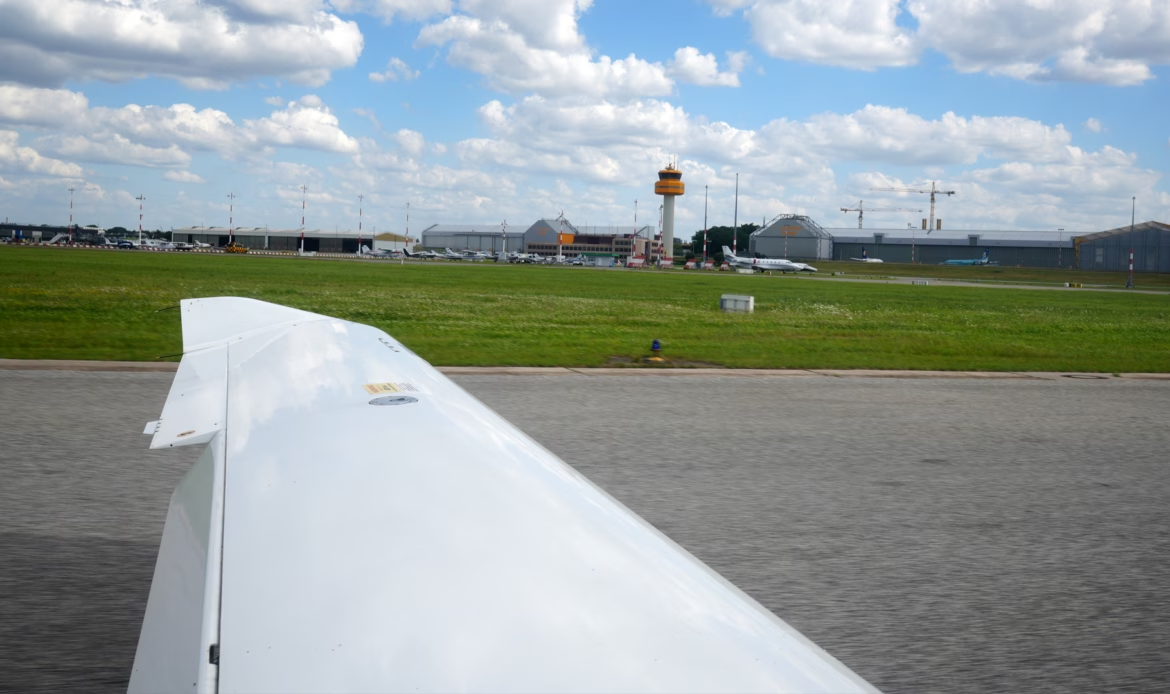
We taxied into the rump, just behind various others that had landed and seemingly already had arrived. We had made it to Hamburg after many years of wanting to try, and this time I would be presenting for PPL/IR Europe. The stakes couldn’t have been higher as everyone was watching. It’s nice to meet many pilots who have a passion that you share and also share the same desire for IFR travel across Europe.
Sadly, I forgot the chocks, so to Rob’s dismay, we had to use ones for A320 aircraft. It would do the job, but it was stupid to look at, and after refuelling for the return flight, we got the taxi to the GAT for passport checks.
ATC Flight plan and route flown –
N0140F150 BRAIN P44 CLN L620 TULIP Y12 SPY N873 GRONY M105 OPJOT T907 MUBZI T903 RIBSO RIBSO2D
Filed ATC flight plan for EGSG-EDDH
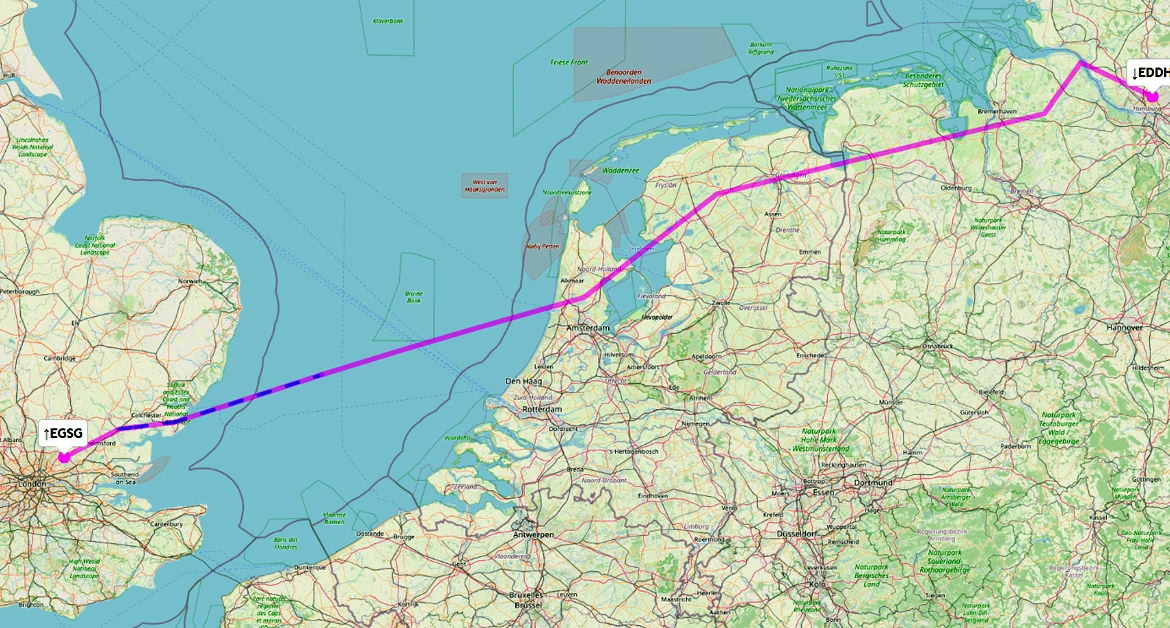
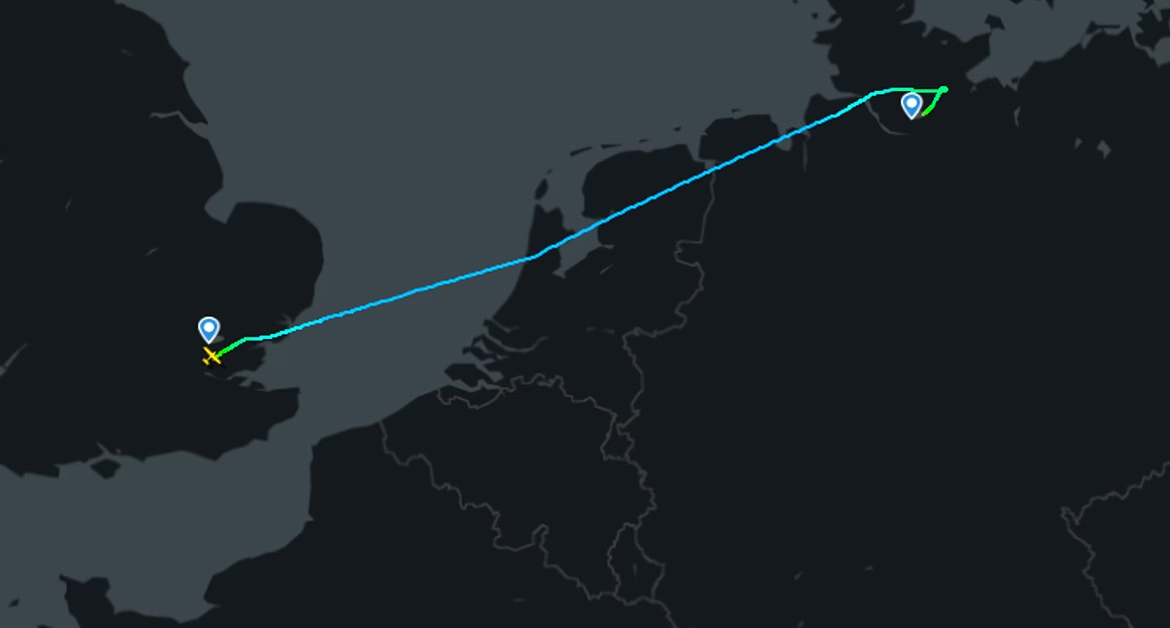
PPL/IR Europe Annual Conference 2024 –
The day started off very well, with a meet and greet with some of my keen followers that I didn’t know existed in the group, but there we are, even IFR pilots also follow me. Some even brought more equipment than I had, but then this was a conference where you had to bring your own stuff.
We rescued one pilot whose passengers left him at the hotel, and took him to the GAT in the minibus once he had secured his aircraft and taken his bags. Oh, the responsibility of being a single crew pilot and having to do all the hard work yourself.
My pre-flight planning showed the walk to the hotel was a mere 20 minutes away, so having seen and heard that the passengers and there bags from previous were still waiting for the taxi, I elected to lead the group of us to our hotel so we could save time and get a pre-dinner beer in at our hotel.
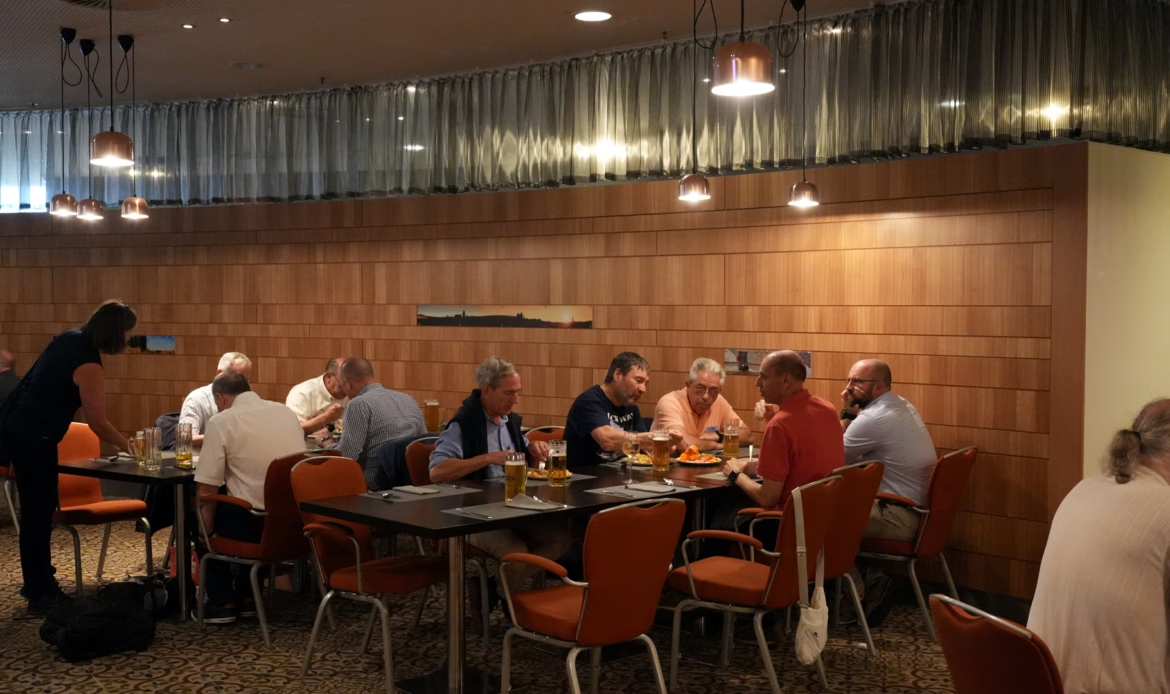
It was pretty warm, and having been freezing up at altitude for 3 hours, you felt it a little more, and it was time for a shower to freshen up. As we spent the last 5 hours dehydrating to ensure we didn’t need to use the toilet (of course I did with the trust midflight pee thingy majiggy) – we spent the next 30 minutes hydrating, some ice cold water and a bottle or two of the Pilsner.
There were some recognisable faces here with plenty of piloting talk, some of it political and the rest about the cool stories and the all-important factor of this weekend, the weather. The forecast for the return was of a top concern with Saturday evening, severe Thunderstorms forecast across Germany, something that would more than likely impact the European Championships being hosted in Germany.
The weather conditions were far worse than they were a month ago when I last flew in Germany, with significant convection far greater and unflyable in a light GA aircraft, at least without FIKI and instant radar.
We decided, after checking in and having a light refreshment, it was time to walk to the Radisson for a meet and greet and the pre-conference evening meal that was taking place in the hotel for us. On the walk, we spotted something we thought was quite rare, but the nearby Airbus Hamburg-Finkenwerder airport meant that the likelihood of spotting
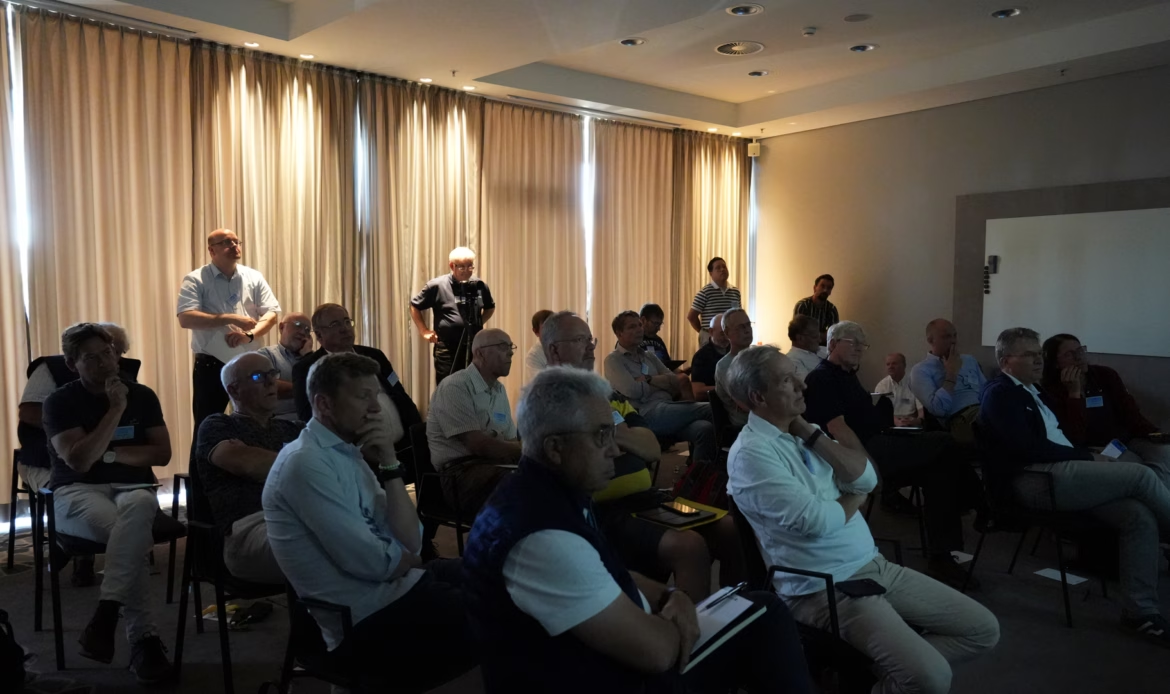
This was a buffet dinner with the usual all-inclusive style options available to us. Of course, we would order beers, what pilots do after a jolly to Europe, and of course, Germany would not? I was meant to fly here most recently for the football to Dusseldorf, but the weather was undeniably poor again, with CBs and Thunderstorms a concern across Europe.
After a lovely evening talking about all things aviation and we elected to head back to the bar for a chat and some beers before bed, and arrange to meet in the morning early for some breakfast, but the buffet at the hotel is fairly pricey so we may just walk to the terminal and see what’s on offer at the airport.
After going through the presentation one last time and having everything prepared, I dedicated more time to sleep and got up at a reasonable time and hoped that I could power through with coffee. I was proudly nervous whilst standing at Starbucks, and didn’t know what to expect with the day being a full-on day. The cost of a Starbucks in the airport terminal was pretty much less than the cost of breakfast, at almost 20 EUR per serving.
The first thing I did was sign in and then proceed to the room I’d use for the first and second Breakout session and prepare my presentation. Because my laptop was severely lacking and didn’t have anything on it except CFMU and AFPEX, I had to ask those on Breakout Three and Four to provide me with a Mac to showcase my presentation on PowerPoint and Media Player. This took most of the spare time to set up, and we would arrive late for the start of the Chairman’s Opening Welcome.
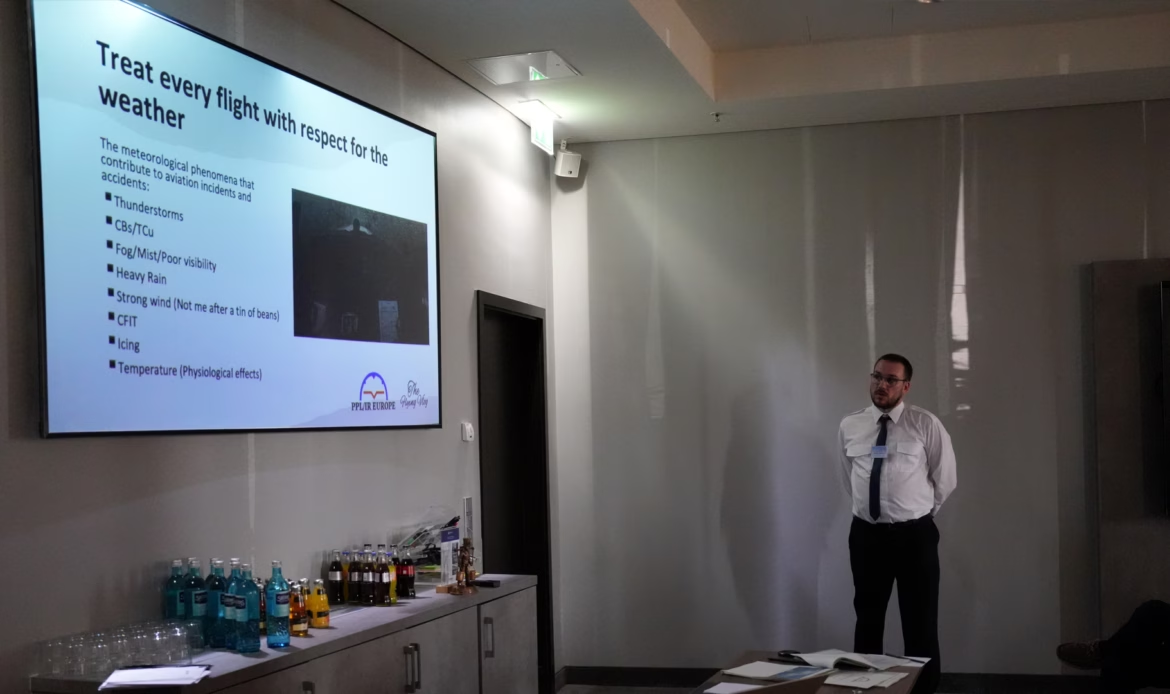
But at least I was ready for Breakout Session one, and I was pretty nervous. My role was to present about Weather Forecasting and Management for Pilots – a session dedicated to understanding Skew-T diagrams, weather fronts and patterns, forecasting tools, and strategies for managing unexpected weather changes during IFR flights.
The day’s forecast was as planned;
PPL/IR Annual conference 2024
09.00 Registration opens.
10.00 we take our seats for the Chairman’s Opening Welcome
10.30 One Pilot’s Flying Experience – hear one pilot’s forty years experiences as a pilot, an aircraft owner, the many aviation-related companies he has owned, his personal airstrip, becoming an instructor, an examiner, and so much more.
11.00 Hear the latest updates from EASA and the CAA, relevant to the European Private Pilot.
11.30 Breakout Session One – a similar format to last year, though one hour for each one this time – please see below.
12.30 Lunch, teas, coffees and soft drinks are included in the price and an opportunity to spend time with fellow pilots.
13.30 Breakout Session Two – a similar format to last year, though one hour for each one this time – please see below.
14.30 Teas, coffees and soft drinks are included in the price and an opportunity to spend time with fellow pilots.
15.00 Breakout Session Three – a similar format to last year, though one hour for each one this time – please see below.
16.00 Breakout Session Four – a similar format to last year, though one hour for each one this time – please see below.
17.00 Closing remarks
After the chairman had opened, we had an update on special projects from Andrew Sinclair, this was followed by a speech on Jim Thorpe’s experiences, followed by lastly on European Regulation with Julian Scarfe.
The first session I presented was nerve-wracking, and it had slightly overrun into lunch, which meant that for part 2, I would have to skip some content. I managed to ensure that by breakout two, this would be slightly shorter by skipping one or two things, but also picking up the pace. Halfway through the day, lunch was included for all of us, and I had the curry that was on offer, although after having two cups of coffee, this probably wasn’t a great mix.
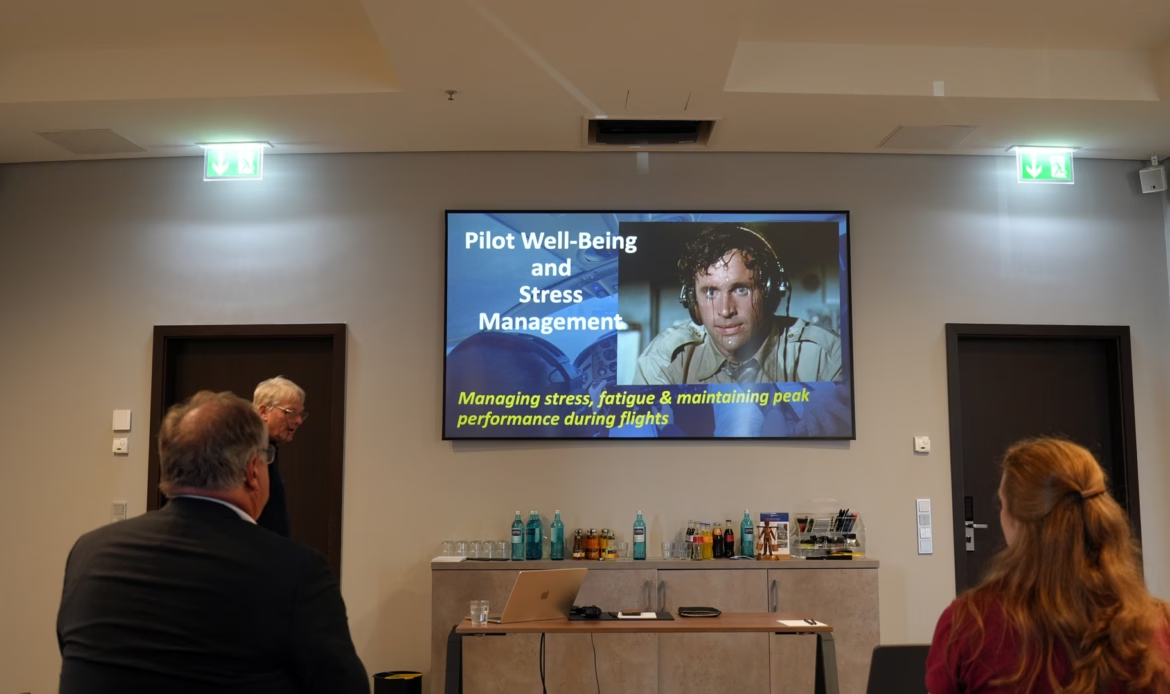
During session two, it was far more intense with the group being far more interactive, providing me with more challenging questions, which meant it was harder to pick up the pace and thus almost overran again before impacting the coffee and networking time. The presentation went well, but there’s a lot I can do if I choose to do that in the future to try and make the content more efficient, but also to try and see if that can be more engaging in the hour time slot I have. Although it was engaging, I think I should perfect that.
Breakout sessions three and four for me were a break, I could visit others and not worry about presenting. For session three, I attended the Emergency Procedures and Safety Best Practices before making my way to the Pilot’s well-being and stress management.
The sessions were broken down into the following;
Breakouts
Foreflight Flight Tooling Beginners Class – 1 breakout of 8 people in the first session
Foreflight Flight Tooling Advanced Class – 2 breakouts of 11 people each session
Weather Forecasting and Management for Pilots – 2 breakouts of 27 people each session
Pilot Well-being and Stress Management – 2 breakouts of 13 people each session
Flying in the UK – 2 breakouts of 10 people each session
Emergency Procedures and Safety Best Practices – 2 breakouts of 23 people each session
Garmin Avionics Drop-In – 19 people attending, over 4 sessions
Aircraft Ownership and Maintenance – 4 breakouts of 9 people each session
It was a long day, and a beer was much needed before we headed off into town. As I was suitably dressed for the occasion, I wanted to change before heading to the dinner as I was in a tie and shirt. I decided that at the end of the presentation, it was time to change before heading to town. It was time for that beer.
The PPL/IR Europe Annual conference was a good opportunity to meet budding pilots and those who share similar passions, whilst presenting meant I was very tired and didn’t take in all the other information from the other sessions, it was however a very good opportunity to meet other pilots and experience what the organisation is all about and how it protects and tries to ease the experience we have within a highly regulated environment.
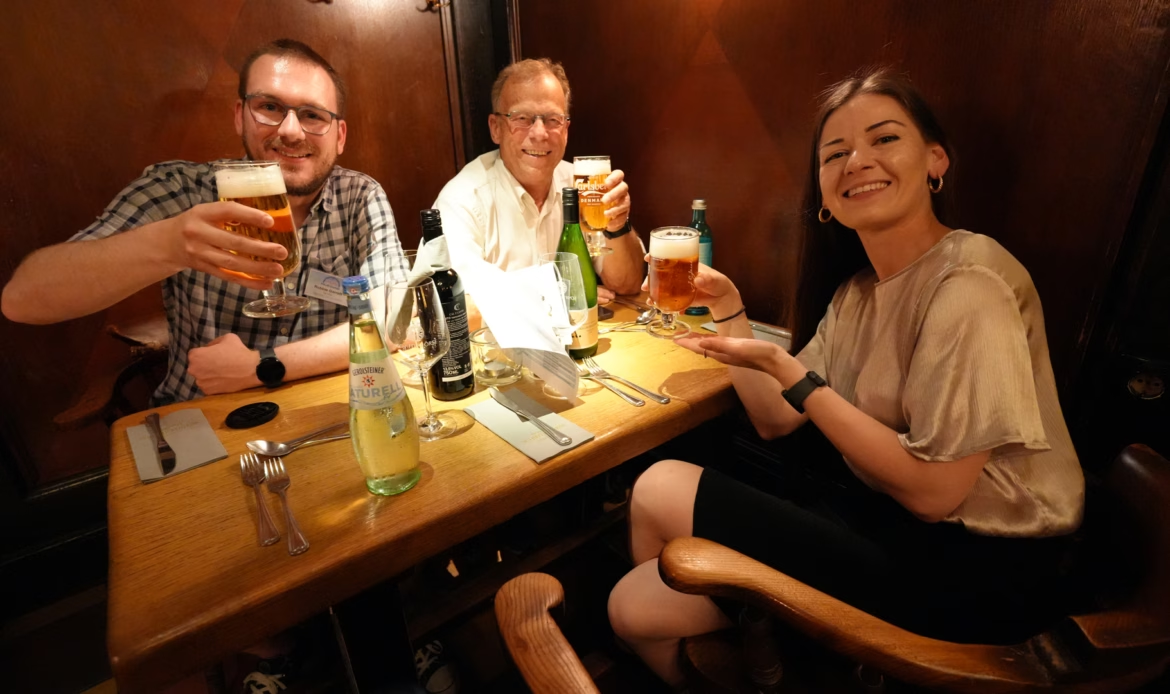
It was a short walk across the road to the terminal building and the metro to Hamburg. Taking the short journey to Hamburg Hauptbahnhof (The central station) on line S1.
Dinner was at 7 pm at Restaurant Schifferboerse, which was opposite the station. We all managed to fit in, bar one or two people who had already headed to the airport to try and beat the weather that was closing in. The only frustrating thing for me was that everything on the menu had seafood, but this was changed, and I got something additional once the prawns were taken away. With the location ideal, Schifferbörse Restaurant boasts a uniquely maritime and rustic charm that captivates guests with its nautical decor and wooden accents.
This was a great way to end the trip, and with that said, a nice opportunity to meet fellow pilots with thousands of hours of experience, years of travelling using an instrument rating.
There are two routes from Hamburg Hbf on the S1, one to the airport and the other to Poppenbüttel. There was a mad rush down the stairs to beat the impending rain that had stopped the game in nearby Dortmund, and the skies were dramatically changing around us with lightning and distant thunder booms. Tonight was going to be a wet one, but we needed to travel back as soon as we could, as the weather was deteriorating quicker than we could drink a glass of wine.
We got the wrong metro train and had to return one stop and change for the train to the airport. This was frustrating, but as soon as we had arrived at the airport, we made the 20-minute walk back to the hotel, where the bugs were making movement, which meant the storms were coming. For me, it was a good night’s sleep ahead after a long 2 days of flying, presenting and eating great German food.
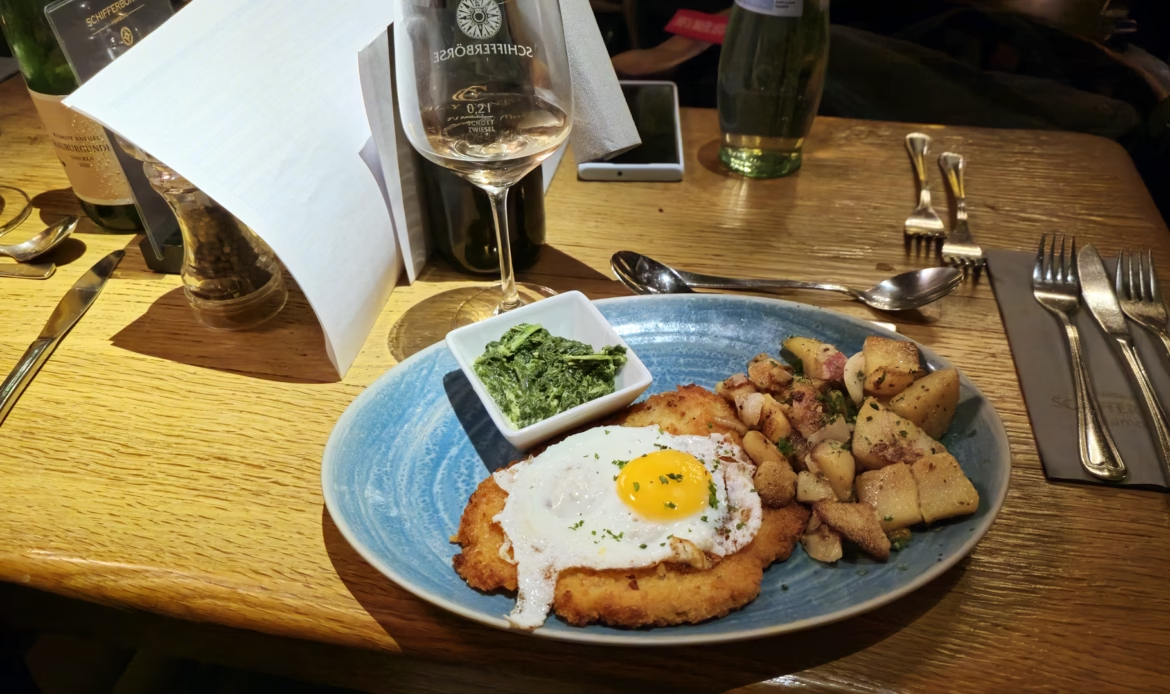
It was the turn of Rob to fly back, and for him, the preparation of weather conditions that were hard to pin down, as we await the storms to come through overnight and clear eastward to eastern Germany. I was, of course, nervous having to sit in the right-hand seat and make no decisions at all and finally become a passenger in the flying I love, that challenges my brain and makes me want to fly more and more.
We didn’t want to spend a lot of money on breakfast, but we also wanted to stretch our legs, so we met for a walk to the local area to find something for breakfast, and all we could find on a Sunday morning was a cafe that no longer did cafe food but ice cream. So, a short walk away, we found a Bakery that could provide us with enough energy to get to the UK. Junge Die Bäckerei, which appears to be a chain.
After a short breakfast and discussion about the flight ahead, we walked back to the hotel to collect our bags, check out of the room and prepare for the walk to the terminal. Now, despite it drizzling, we still fancied walking vs an expensive airport taxi. It was only twenty minutes and just required my glasses to be wiped on arrival at the GAT.
Weather Forecast (Return flight) –
The weather on the Saturday was not favourable with major storms in Germany and across swathes of Europe associated with a cold front & an occlusion, which may impact us with the flight on Sunday. The match at the BVB Stadion in Dortmund for Euro 2024 was delayed for close to 30 minutes after a storm caused heavy rain and lightning strikes.
However, come Sunday, the weather had cleared to a fairly damp mess in Hamburg, with low cloud bases and fairly heavy drizzle; with the majority of clear skies for the flight to the UK once we cleared the back end of the overnight occlusion, the flight should be benign till the decaying cold front and decaying occlusion near the UK, which could potentially cause some issues with convection and icing risks.
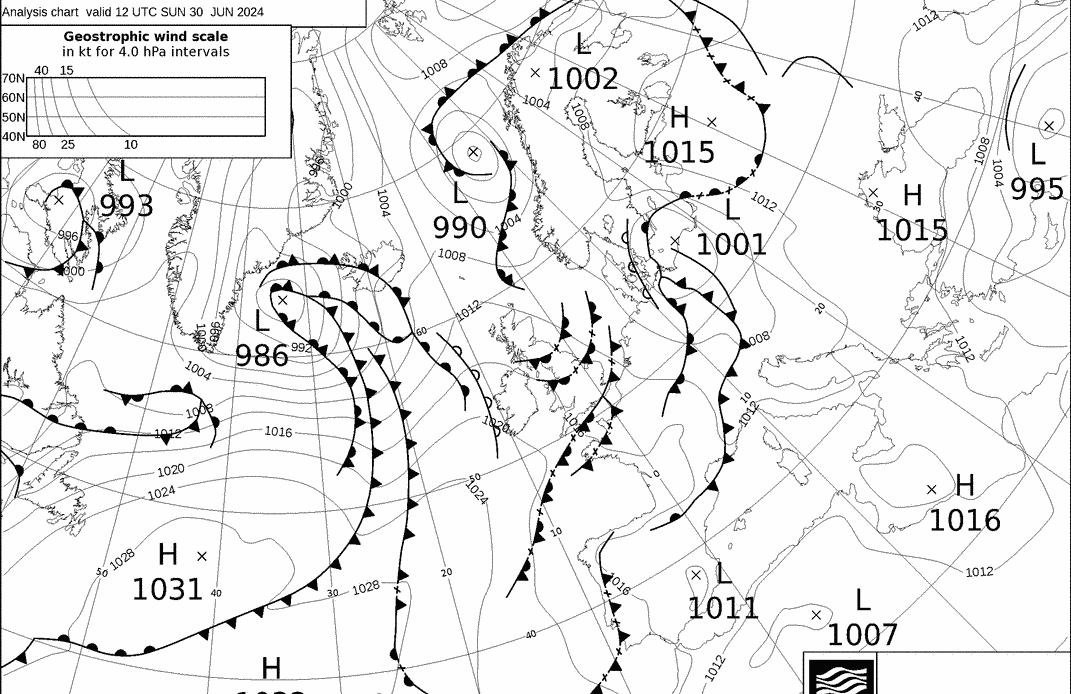
TAF for Hamburg, London Stansted & London Southend on 30th of June 2024
TAF AMD EGSS 300905Z 3009/0112 32007KT 4000 RADZ BKN004 BECMG 3009/3011 9999 NSW SCT025=
TAF EGMC 300603Z 3006/3015 32005KT 9999 SCT045 BECMG 3007/3009 BKN012 TEMPO 3007/3011 8000 -RADZ PROB30 TEMPO 3008/3011 4000 RADZ BKN008 BECMG 3011/3013 SCT030=
TAF COR EDDH 300531Z 3006/0112 32008KT 9999 BKN040 TEMPO 3006/3012 BKN012 PROB40 TEMPO 3006/3008 BKN004 PROB30 TEMPO 3006/3012 3000 RADZ BKN008 PROB30 TEMPO 3012/3014 BKN012 PROB30 TEMPO 3016/3019 SHRA BKN012TCU BECMG 3019/3021 28003KT TEMPO 0103/0112 4000 SHRA BKN012TCU BECMG 0106/0108 26008KT=
Flight to the UK –
I was actually glad that I wouldn’t be flying this flight, but at the same time, I was somewhat nervous; this was likely to be full IMC for a good portion of the flight, or at least the forecast stated so. Rob, the owner and instructor on G-ZANY, would fly the return sector – gladly so as the weather looked challenging for the long sector back to the UK.
We arrived at the airport GAT and went through security checks, everything off, including the belts and through to security, the least favourite part about big airports, but far easier than the ones for fare-paying passengers. We very quickly cleared customs, and when attempting to settle the fee’s was told to use Aerops, which would send me the bill.
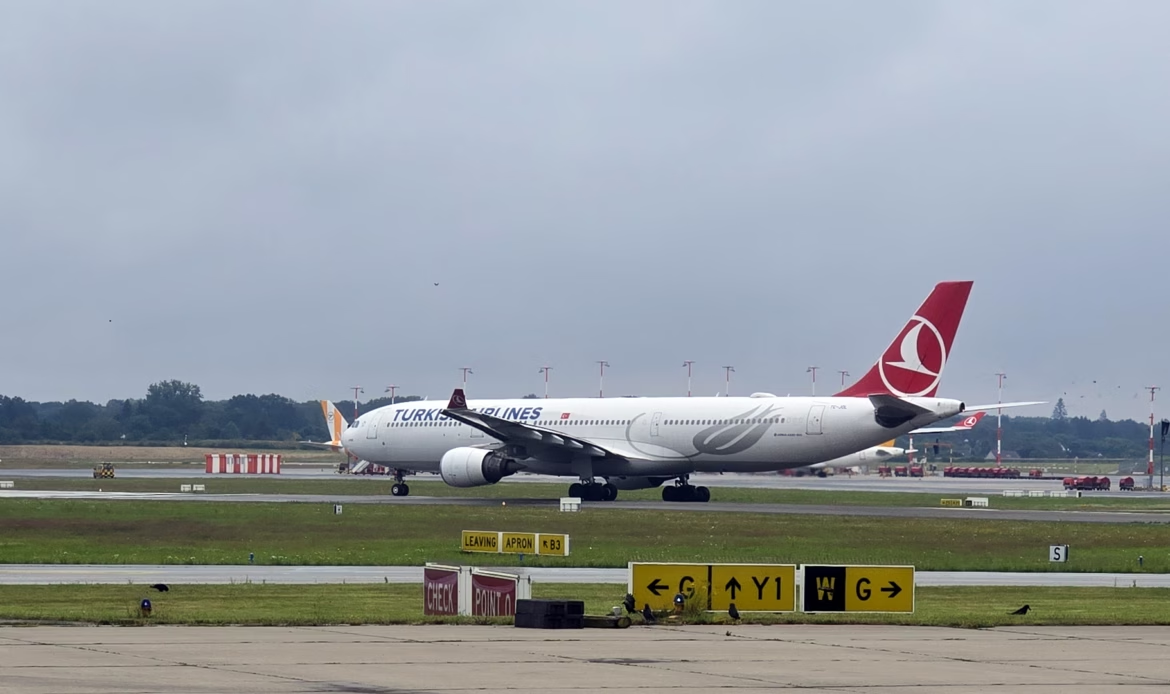
Await the minibus to the ramp that we arrived at a mere 48 hours ago, aircraft still parked up, curiously concerned about the weather that was forecast and those waiting for it to clear later in the day, with icing risk en route a potential concern. Those who had already departed stated they were in clear weather just above FL80-FL100, and it was smooth through the front, so my pre-flight nerves were slightly settled – it’s always funny that all of the pilots in the whatsapp group setup for the duration of the event had signal in the cruise and could feedback vital PIREPS, some with machines designed for flight into known icing (FIKI).
The weather was awful, the visibility was poor, overnight storm cells had cleared and left a wet mess of drizzle and a wet runway, not the most fun if you wear glasses and want to see properly, especially on a busy ramp. On arrival, we filled the aircraft up with 72 liters of fuel, but after some analysis of the winds, the flight time was going to be significantly more than forecast – hence the choice to fly at FL100 vice the normal higher flight levels.
The flight time was forecast to be just over 3.5 hours, which in laymans terms is probably closer to 4 hours, but we would be hopeful and elected to get the fuel truck back over for just a mere silly 20 litres, but this ensured we had sufficient reserve onboard and almost 5 hours of fuel. This would mitigate against the likely need for an en route fuel stop.
With the aircraft loaded, we jumped in, listened to the ATIS, and Rob prepared the aircraft for the long flight back to the UK and the last flight before my IR skills test revalidation. A big trip was planned in July to Spain, the hottest month of the year, but as of writing, that didn’t come to fruition due to scheduled maintenance. I just about managed to get my Instrument Rating Revalidated, so that was a good July.
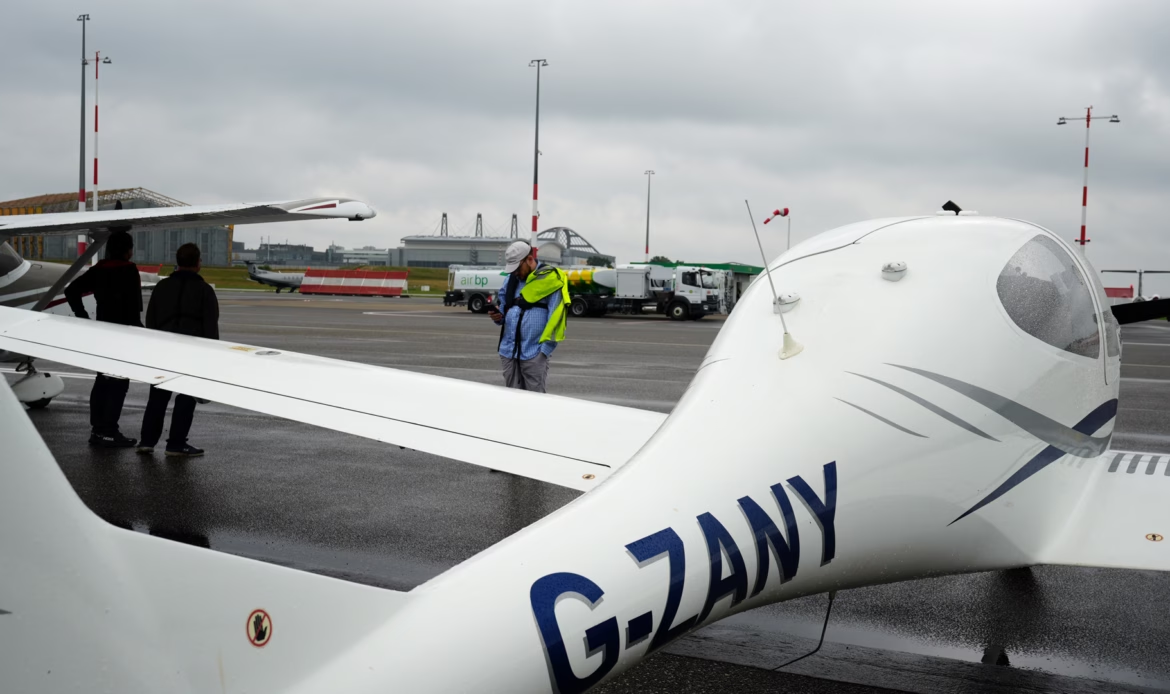
Airliners were departing the intersecting Runway 33, with arrivals on 23, but because the airport was fairly busy and our direction of flight, we were gifted a short taxi to D8 for a departure to the UK. I am guessing because of the weather conditions, and the fact we were dinky and slow, they wanted us using the runway for arrivals, vice the departure runway, to ensure they could maintain an orderly flow of traffic.
We lined up on a very wet runway 23, and off we went, full power. It was a weird feeling to be climbing away into full IMC on the right-hand seat but here we go, light rain, various layers of cloud and climbing through them in what felt like an airliner but once we had got up a little, through a few thing layers of solid IMC and up above the clouds in no time at all and reaching FL100 in roughly 23 minutes.
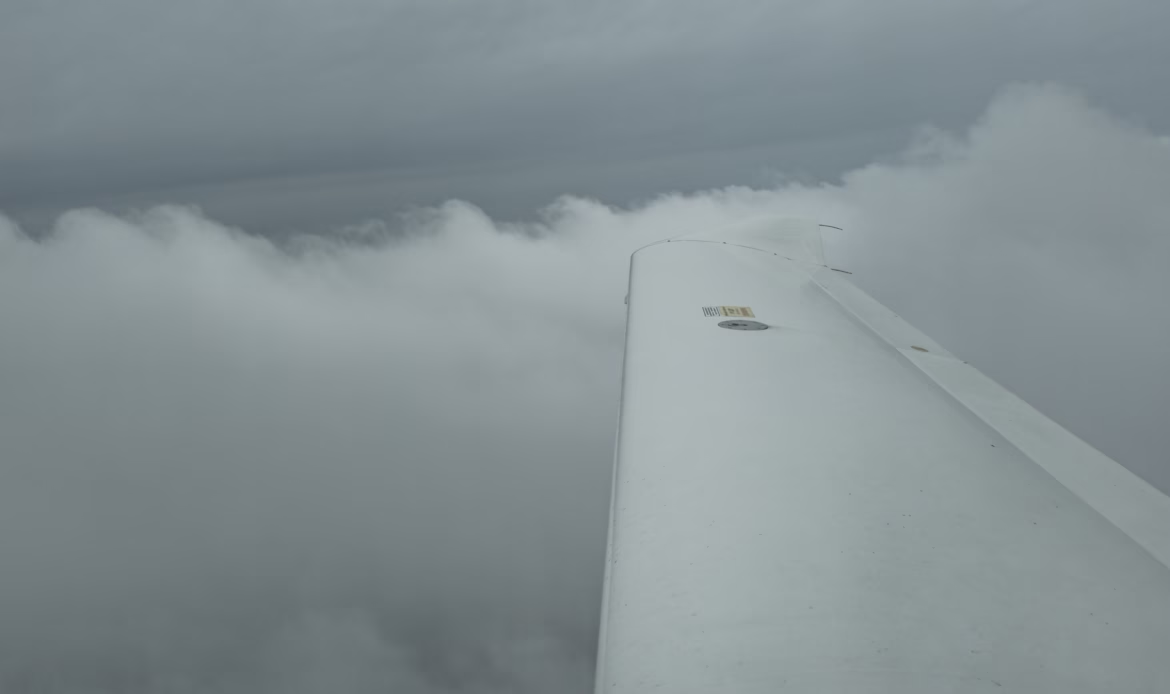
It was very distinctive that we were flying away from the front that had passed through, very clearly visible and although at the moment the winds weren’t as strong, they were forecast to be stronger the closer we got to the UK, so whilst we were confused as to why the winds weren’t as strong as forecast and a good ground speed of 120knots leaving the back end of the front, there was more weather, more fronts to transition.
I keep a careful eye on the weather ahead, and it was interesting to note how my focus wasn’t on flying; it was instead on the weather picture and with a decaying cold front and decaying occlusion to navigate as per the forecast fax charts. The wind started picking up, and the ETA home grew, but we knew that the quick flight we had experienced so far was only the beginning.
Showers started popping up around us, and although from FL100 we couldn’t see them as we were between some layers and they were below the layers, I could carefully look at the radar and advise Rob on headings if we needed. In and out of some layers of IMC, this was some proper IFR flying in the lower airways.
Approaching Amsterdam, we were given lots of radar vectors to avoid the inbound traffic and outbound traffic, but this did provide a cool opportunity to get an overview of Schiphol up close as well as majestically avoid some of the red radar returns on the Satellite weather feed. Although I couldn’t see anything, it doesn’t mean it wasn’t there.
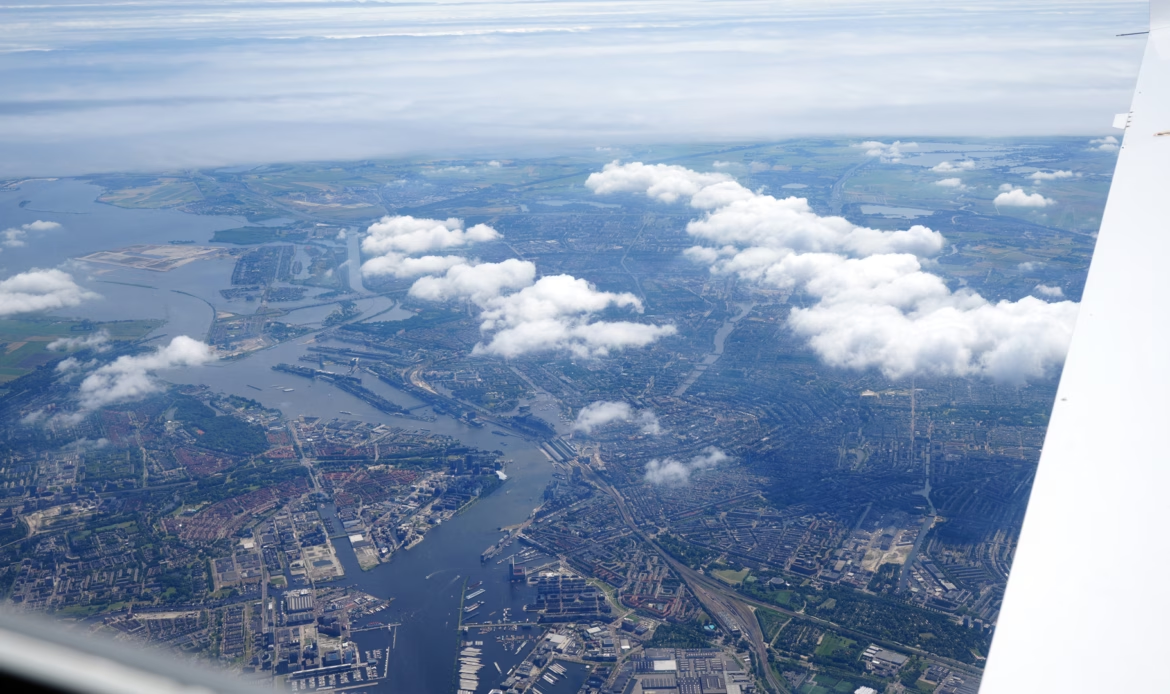
We began the North Sea Crossing, but we had over an hour of flight time ahead, however these headwinds were a PITA, an absolute annoyance every time I fly, and yes there’s going lower, but with the weather being awful across Europe, flying above it and well clear of any convection was the
The North sea was forecasting some rubbish weather, that at this level it looked like we would be in it, and as I predicted we would be – a few lumps and bumps as we entered each towering cumulus cell, nothing spectacular but unsettling but more nerve wracking was the ice buildup, and back out of IMC till the next time, the sun providing a helping hand with the view of seeing how much we had picked up.
We continued and although with oxygen already plugged in due to the length of fight at FL100, we had the option to outclimb this weather and although the tops looked a lot more convective, the turbulence wasn’t significant to worry us, but this time more ice and more noticeable but again there was no significant speed drops, so it had negligible effect on the aircraft performance with two escapes, descend into the front into significantly warmer air but potential a far greater ice risk or outclimb the weather till we had to descent into the UK.

I am positive these were towering cumulus, lots of moisture, and the structure within the front was more significant than I’ve seen before or been brave enough to get closer. These cells, as part of the decaying front, were benign. We were now with London Control, and the frequency was the busiest we’ve had so far.
With a descent nearing, we started our descent through the layers into the UK, before it became visible. It’s always a fantastic sight to see the UK ahead after a trip away, it’s a sign that you are home, sometimes the weather’s so bad you only see it at a few hundred feet, but this time just a few puffy clouds below us to clear in the further descent.
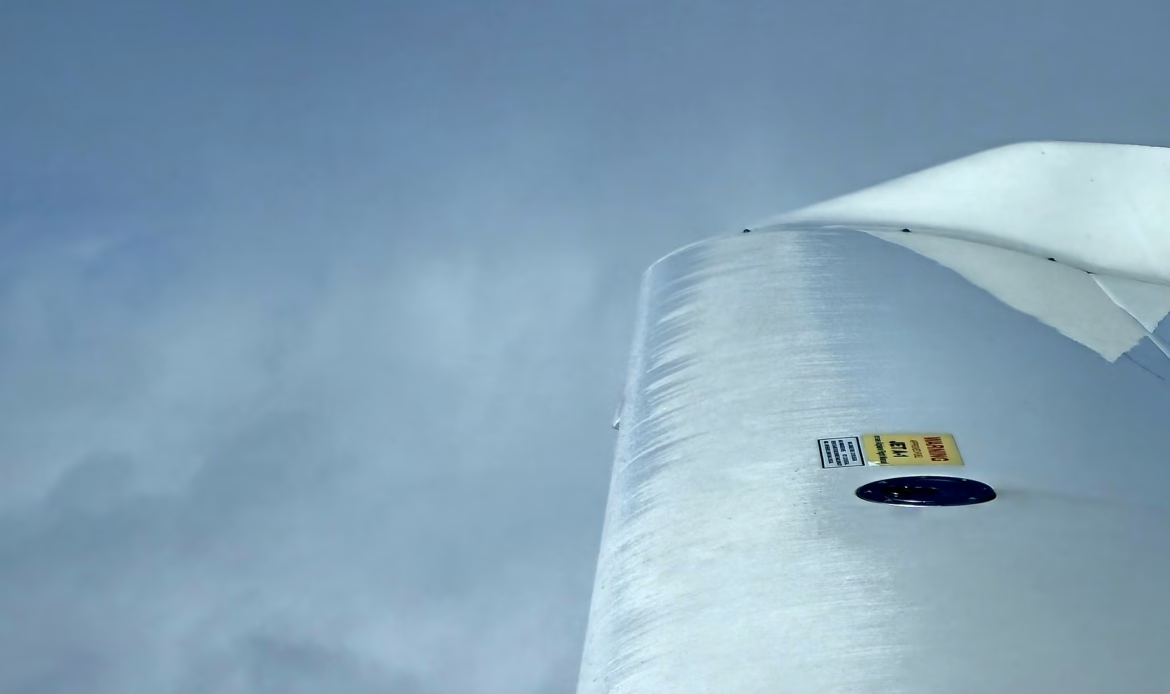
A pleasant surprise when we were handed off to Southend Director was the Red Arrows flying past, and although we couldn’t see them, we did see the smoke of one of the jets, a cool sight I’ve witnessed before whilst flying into Gloucester almost 10 years ago as they transited across.
A further descent to keep us clear of the busy airspace in London and clearance to descent outside of controlled airspace – we were hit by the worst turbulence I’ve experience in a light aircraft in a long time, out of nowhere we had a momentarily but brief period of severe turbulence that surprisingly didn’t knock out the autopilot.
We continued our descent before levelling off for the usual approach to Stapleford, a quick left turn, a right turn to enter the ATZ and a descent to the circuit altitude for our arrival onto 03L. The bumpiest runway of them all, and with that, 3 hours 45 minutes later, we were arriving in the UK and, of course, met by the border force again.
I was hoping they would make it quick, as after 4 hours in this airplane without a toilet, I was keen to use it, and we then returned to the aircraft to have it refuelled for the next flight and fully ready for the next pilot.
ATC Flight plan and route flown –
N0125F100 WSN3B WSN N125 EEL N872 PAM L980 XAMAN L980 LAM
Filed ATC flight plan for EDDH-EGSG
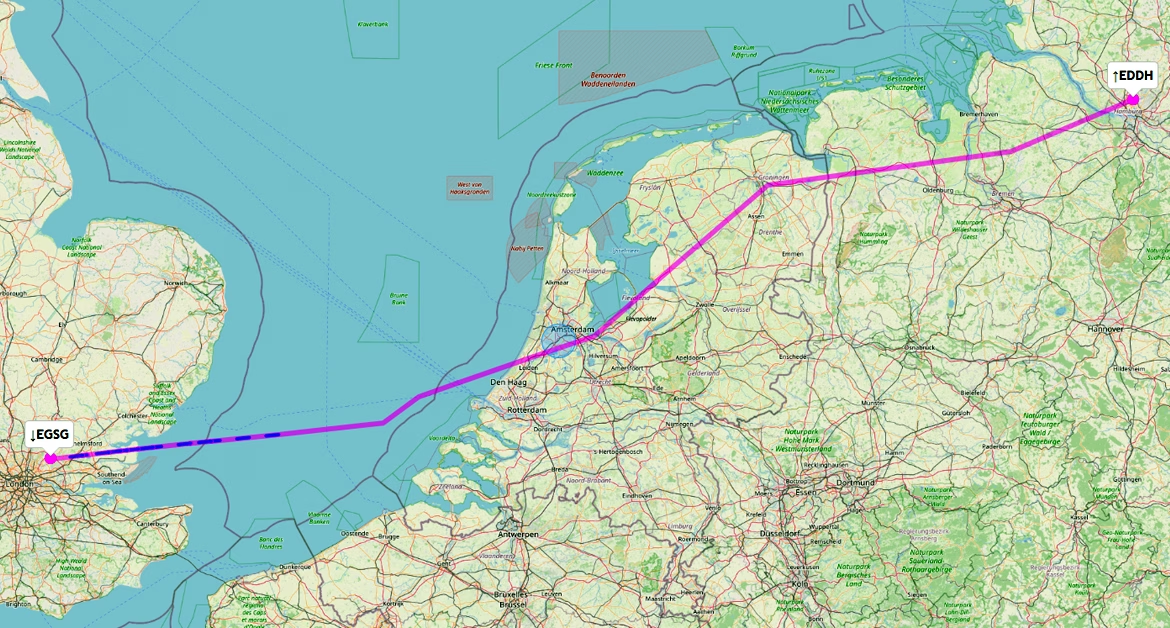
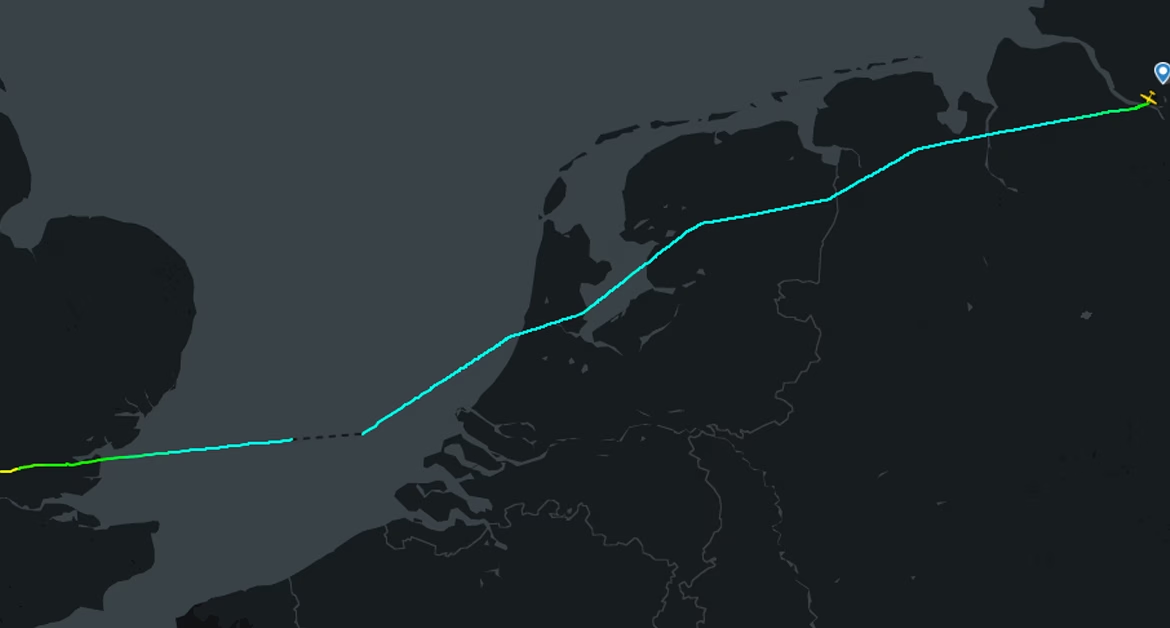
Outcome & Costs –
The trip to Hamburg and presenting for PPL/IR Europe made me realise that there’s a cool opportunity out there to share my experiences first-hand and not just on YouTube, where I would usually do so, which may highlight an opportunity to visit schools and colleges and share my experiences and encourage those with a dream to also chase it, it’s very much possible.
Additionally I’ve became more confident in IMC conditions by sitting in the right hand seat, confident but not cocky which is the best way to look at it. It’s something I want to do in the future, which is to teach IR flying in the UK, and I believe that’s something I can do if I learn how to deal with being comfortable and confident in my abilities.
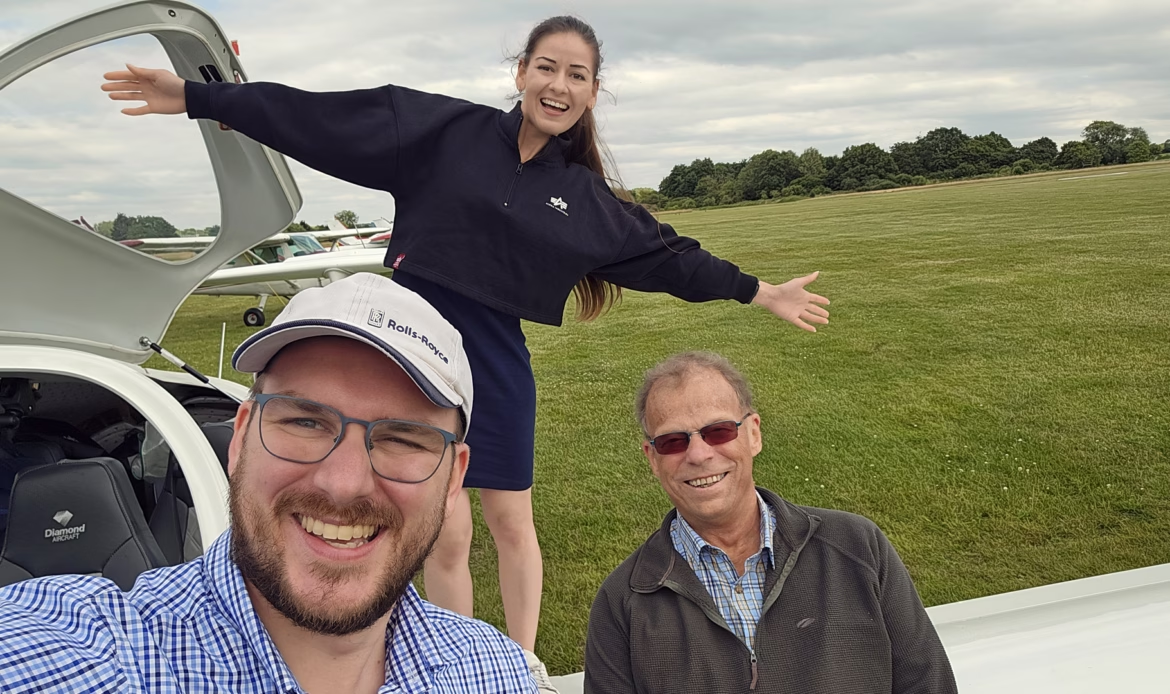
Because of cost sharing with flying the aircraft, the costs below are slightly reduced from normal.
Airport Costs –
The final bill was split into the following;
Hamburg Fees
Total costs were (Paid by AerOps);
- Landing – 13.16 EUR
- Entry – 13.16 EUR
- Terminal – 16.70 EUR
- Emissions Landing 0.36 EUR
- Emissions Entry – 0.36 EUR
- Parking Fee (Per 15 min) x127 (0.50 EUR) – 63.50 EUR
- Transport between GAT and Aircraft x2 – 52.60 EUR
Sub-Total: €159.84 (£138.20)
Jet A1 Uplift: €205.16 (£177.38 (92 Litres) @£1.93(2.23 EUR) litre
Total Costs Hamburg Airport: €159.84 (£138.20)
Hamburg Costs –
Food, Drink, & Leisure Costs: £63.20
Main Conference Event (Members) £99.00
Friday Evening Dinner @ Raddison Blu: £60.00
Saturday Evening Dinner: £70.00
Accommodation Costs: £70.50 per night per person
Total Accommodation Costs: £282
Sub-Total: £574.20
Flying Costs –
Aircraft Charges: £579.50 (@ £183 per hour (3 hours 10 minutes flown)) – Does not include return sector
Airport Fees: £138.20 (As above)
Oxygen Refill – £20.00
JetA1: €205.16 (£177.38 (92 Litres) @£1.93(2.23 EUR) litre
Fuel costs at Hamburg weren’t borne by me, but are included for reference.
Total Cost –
Total Costs (Non-Aviation): £574.20
Total Costs (Aviation): £737.70
Total Costs (All): £1311.90
Version 1.0 – Last Updated 11/04/2025
Aircraft –
The aircraft is a DA40 TDI, which uses a Thielert “Centurion” 135 hp (101 kW) diesel engine and burns diesel or jet fuel. It has a constant-speed propeller and FADEC (single lever) engine control. G-ZANY is based at Stapleford Aerodrome, Essex, UK and was delivered as new in 2003.
Read more about the aircraft on the dedicated page
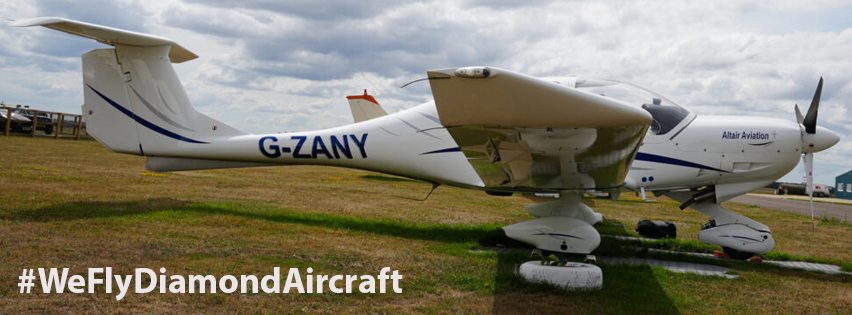
Supporting the YouTube Channel –
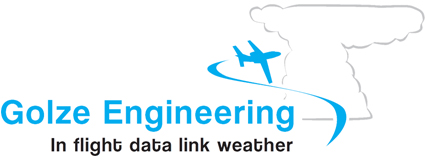
Support the YouTube Channel –
Welcome to The FLYING VLOG…
I am a current PPL(A), SEP (LAND), IR(A) SE/SP PBN, IR(R) & Night holder. Flying the world, exploring its hidden treasures. Taking pictures and vlogging the journey; I hope I can provide you with an oversight of my progression as I develop my skillset and airmanship in exclusive videos on my YouTube channel.
Now flying IFR in the Airways of Europe & beyond. Bringing you an exclusive niche to YouTube, flying in the same skies with commercial airliners.

